Uncategorized
Natural Lighting For Restaurants: Design Ideas to Impress Your Guests
Lighting plays a crucial role in shaping the dining experience in restaurants, resorts, and eateries. The right lighting can enhance the ambiance, highlight the decor, and make food look more appealing. This guide will explore the importance of restaurant lighting, focusing on restaurant light fixtures/restaurant pendant lights. We will discuss various lighting strategies, design tips, and practical considerations to help you create an inviting and memorable dining experience.
The Importance of Lighting for Restaurants
Effective lighting in a restaurant is essential for several reasons:
- Ambiance and Mood: Lighting sets the tone for the dining experience, creating a warm and welcoming atmosphere that can influence customers’ perception of the food and service.
- Highlighting Decor: Well-placed lighting can accentuate the architectural features, artwork, and overall decor of the restaurant, enhancing its aesthetic appeal.
- Showcasing Food: Proper lighting makes dishes look more appetizing, highlighting colors and textures that enhance the dining experience.
- Functional and Practical: Adequate lighting ensures that customers can read menus easily and that staff can work efficiently and safely.

Types of Restaurant Light Fixtures
There are several types of restaurant light fixtures to consider, each serving different purposes and contributing to the overall lighting scheme:
- Ambient Lighting: Provides general illumination for the restaurant, creating a comfortable level of brightness without glare.
- Task Lighting: Focuses on specific areas where activities like reading menus or preparing food are performed. This includes lighting for kitchen areas, bars, and tables.
- Accent Lighting: Highlights specific features such as artwork, architectural elements, or decorative items. It adds depth and dimension to the space.
- Decorative Lighting: Adds visual interest and complements the restaurant’s design theme. This includes chandeliers, wall sconces, and pendant lights.
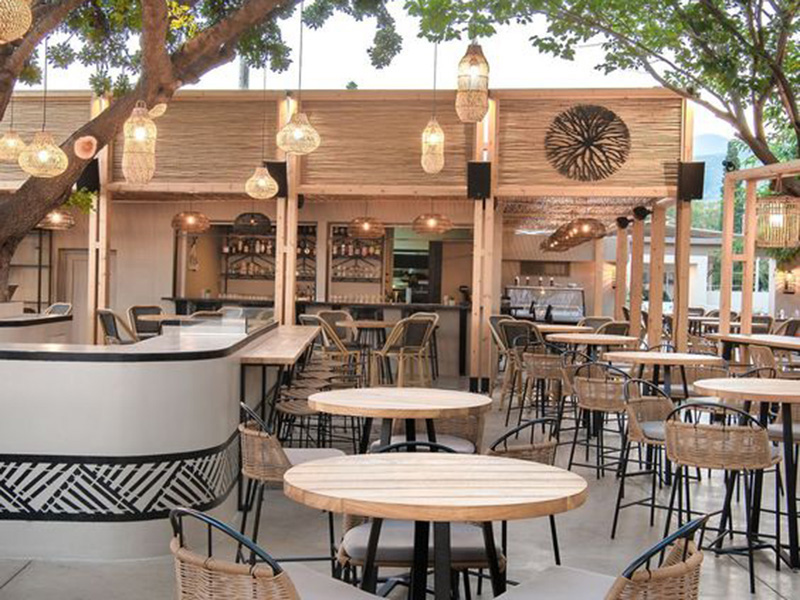
The Role of Restaurant Pendant Lights
Restaurant pendant lights are a popular choice for adding both functionality and style to a dining space.
Here’s why they are an excellent option:
- Focused Illumination: Pendant lights provide direct, focused lighting, making them ideal for highlighting tables, bars, and other specific areas.
- Aesthetic Appeal: Available in a wide range of designs, pendant lights can enhance the restaurant’s decor and reinforce its theme.
- Space-Saving: Hanging from the ceiling, pendant lights save valuable floor space, which is especially useful in smaller dining areas.
- Adjustable Height: Many pendant lights come with adjustable cords, allowing you to customize the height and create the desired lighting effect.
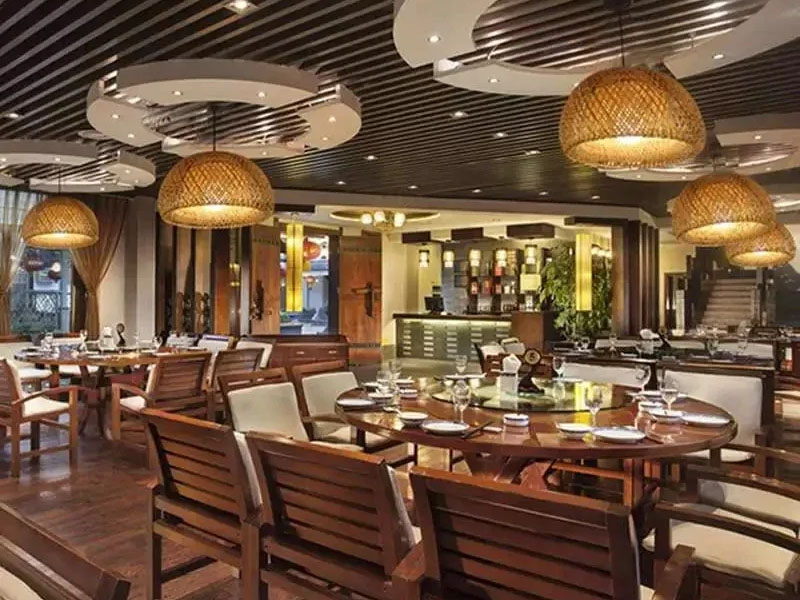
Designing with Restaurant Pendant Lights
To make the most of restaurant pendant lights, consider these design tips:
- Create Zones: Use pendant lights to define different areas within your restaurant, such as dining sections, bar areas, and waiting spaces. This helps in creating distinct zones that enhance the overall dining experience.
- Mix Styles: Combining different styles of pendant lights can add visual interest and create a unique look. Mixing modern and vintage designs can result in a captivating aesthetic.
- Choose the Right Bulbs: The type of bulb used in pendant lights can significantly affect the ambiance. Warm white bulbs create a cozy atmosphere, while cool white bulbs provide a more energetic and vibrant feel.
- Use Dimmers: Installing dimmer switches allows you to adjust the brightness of your pendant lights according to the time of day and the desired mood. This is particularly useful for restaurants that transition from lunch to dinner service.
- Complement with Other Lighting: While pendant lights are a focal point, incorporating other types of lighting, such as wall sconces and floor lamps, can create a balanced and layered lighting scheme.
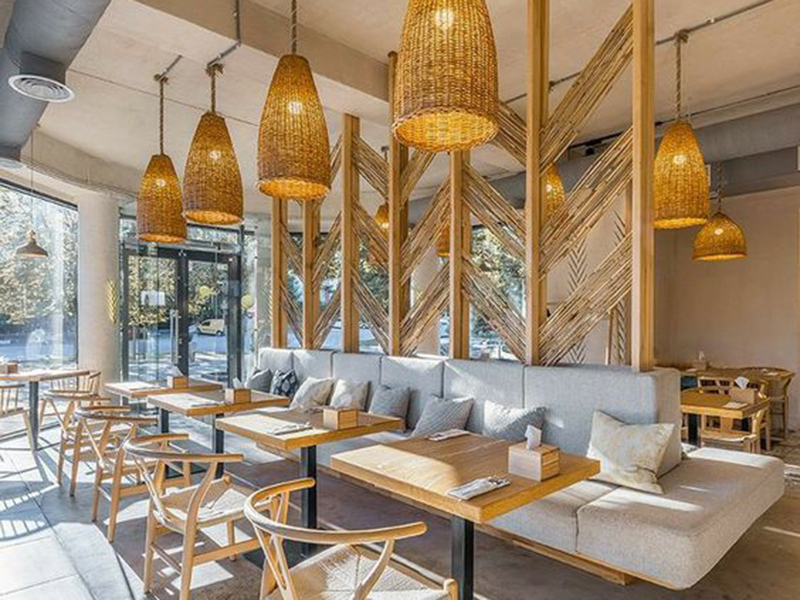
Practical Considerations for Restaurant Lighting
When planning your restaurant lighting, it’s essential to consider practical factors to ensure functionality, safety, and cost-effectiveness:
- Energy Efficiency: Opt for energy-efficient LED bulbs to reduce electricity costs and minimize environmental impact. LED bulbs also have a longer lifespan, reducing maintenance needs.
- Maintenance: Choose light fixtures that are easy to clean and maintain. Regular cleaning is necessary to keep fixtures looking their best and to ensure optimal lighting performance.
- Regulatory Compliance: Ensure that your lighting setup complies with local building codes and safety regulations, including proper installation, wiring, and the use of fire-resistant materials.
- Customer Comfort: Avoid placing lights directly above customers’ heads, as this can create harsh shadows and discomfort. Position pendant lights to the side or at an angle to provide pleasant, diffused lighting.
- Accessibility: Ensure that light switches and controls are easily accessible for staff to adjust lighting as needed throughout the day.
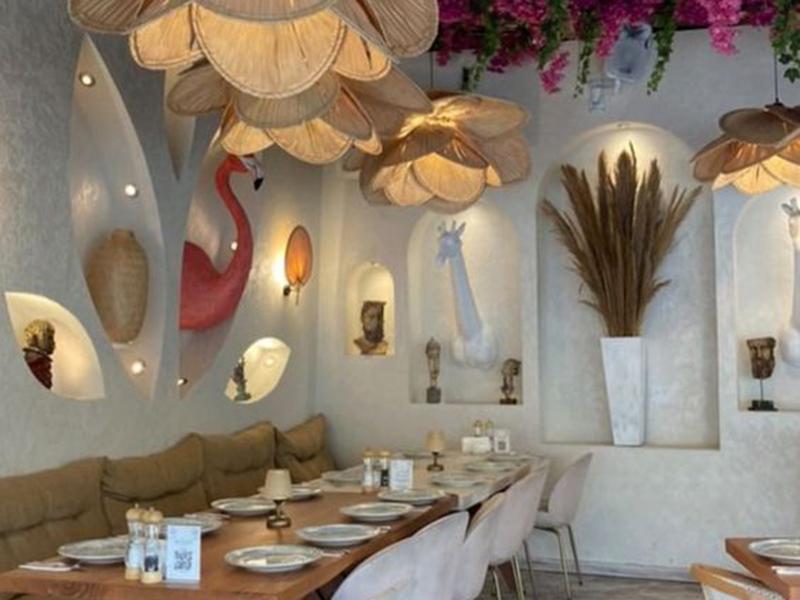
Steps to Implement Effective Restaurant Lighting
Implementing effective lighting in a restaurant involves careful planning and execution. Here are the steps to achieve the perfect lighting setup:
- Assess Your Space: Evaluate the layout and size of your restaurant to determine the best lighting strategy. Consider areas that need more illumination and spaces where you want to create a specific mood.
- Choose Your Fixtures: Select restaurant light fixtures that complement your restaurant’s design and meet your lighting needs. Consider the style, size, and color of the fixtures.
- Plan the Layout: Decide where to place each light fixture. Ensure balanced lighting by avoiding over-lighting or under-lighting any area. Use pendant lights to highlight key areas like tables and bars.
- Install Dimmers: Install dimmer switches to control the brightness of your lights. This feature allows you to adjust the lighting throughout the day to create the desired ambiance.
- Test the Lighting: Once installed, test the lighting during different times of the day to ensure it meets your needs. Make adjustments as necessary to achieve the perfect balance of light.
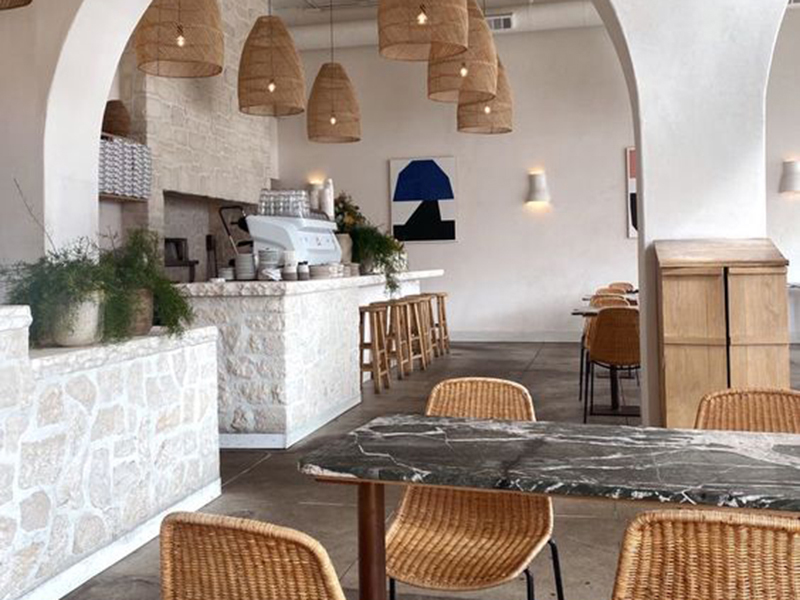
Enhancing the Dining Experience with Lighting
Lighting plays a vital role in shaping the dining experience in your restaurant. Here’s how you can enhance this experience through thoughtful lighting design:
- Welcoming Entrance: Use bright, inviting lights at the entrance to draw customers in and create a welcoming first impression.
- Comfortable Dining Areas: Ensure dining areas are well-lit but not overly bright. Soft, warm lighting creates a cozy atmosphere that encourages customers to relax and enjoy their meal.
- Highlighting Food: Use focused lighting to highlight your dishes. Well-lit food presentations can make dishes look more appealing and appetizing.
- Creating Ambiance: Adjust the lighting throughout the day to match the desired mood. Brighter lighting works well for breakfast and lunch, while dimmer, warmer lights create a relaxed dinner atmosphere.
- Safety and Accessibility: Ensure pathways and stairs are well-lit for safety. Also, consider lighting needs for all customers, including those with visual impairments.

Case Study: Successful Restaurant Lighting
Let’s explore a real-world example of successful restaurant lighting:
The Gourmet Bistro in New York City is known for its sophisticated ambiance, largely due to its expertly designed lighting. The restaurant features a mix of restaurant pendant lights, chandeliers, and wall sconces, creating a warm and inviting atmosphere. Here’s how they achieved their stunning lighting design:
- Pendant Lights Over Tables: The Gourmet Bistro uses restaurant pendant lights with dimmable LED bulbs over each table, creating intimate and cozy spots for diners.
- Chandeliers for Elegance: In the main dining area, ornate chandeliers add a touch of elegance and sophistication, enhancing the upscale vibe of the restaurant.
- Accent Lighting: Wall sconces and floor lamps provide additional layers of lighting, highlighting the restaurant’s decor and ensuring every corner is well-lit.
- Dimmer Controls: The restaurant uses dimmer switches to adjust the brightness throughout the day, creating a bright and airy atmosphere for lunch and a soft, romantic glow for dinner.
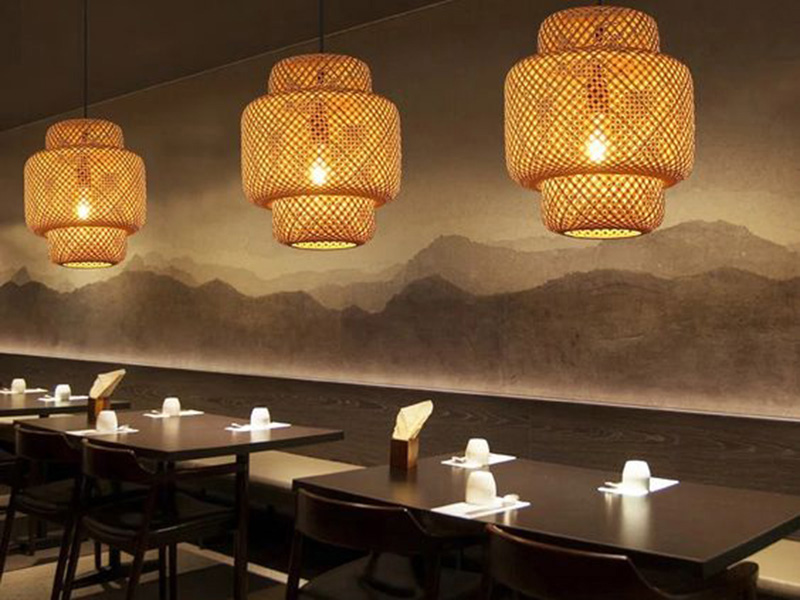
Future Trends in Restaurant Lighting
Staying ahead of trends can keep your restaurant fresh and appealing. Here are some emerging trends in restaurant lighting:
- Smart Lighting: Smart lighting systems allow you to control the lighting remotely and create dynamic lighting scenes. This technology can enhance customer experience and improve energy efficiency.
- Sustainable Lighting: Sustainable and eco-friendly lighting options are becoming more popular. Consider using fixtures made from recycled materials and energy-efficient LED bulbs.
- Vintage and Industrial Styles: Vintage and industrial-style lighting fixtures continue to be popular. These styles can add character and a unique touch to your restaurant’s decor.
- Custom Lighting Solutions: Custom lighting fixtures tailored to your restaurant’s design and theme can create a distinctive and memorable look.
- Biophilic Design: Incorporating natural elements like plants and wood into your lighting design can create a calming and inviting environment.
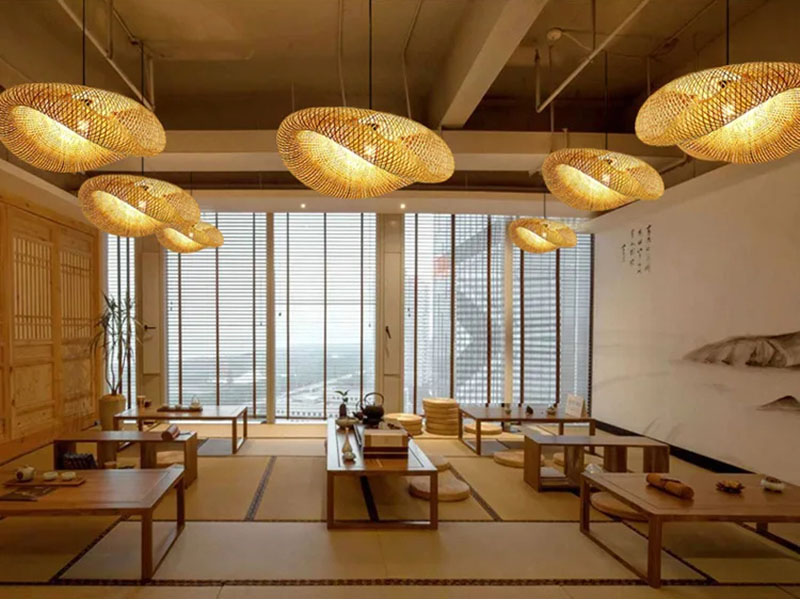
Conclusion
Lighting is a crucial aspect of creating an inviting and aesthetically pleasing environment in restaurants, resorts, and eateries. Restaurant light fixtures and restaurant pendant lights, with their stylish designs and functional benefits, are excellent choices for enhancing your lighting scheme. By thoughtfully planning your lighting design and considering practical factors, you can create a unique and inviting space that encourages customers to relax and enjoy their dining experience.
The right lighting can transform your restaurant from a simple eatery to a cherished dining destination where customers love to spend their time. So, take the time to explore different lighting options, experiment with designs, and create a space that truly reflects your restaurant’s personality and brand.
Investing in high-quality lighting will undoubtedly pay off in the long run, contributing to the overall success of your business. Whether you’re opening a new restaurant or revamping an existing one, effective lighting can help you create a warm, welcoming atmosphere that keeps customers coming back.





Unlock VIP Perks
Join as a priority member to receive gifts and be the first to access exclusive deals, our newest collections, and more...
Read More
10 Best Bamboo Rattan Furniture Ideas for your Home
In a world increasingly focused on sustainability and wellness, bamboo rattan furniture has found its [...]
Jul
Recessed Lighting Layout Guide: Room-by-Room Tips & Ideas
Whether you’re remodeling a kitchen, updating your bathroom, or designing a cozy basement retreat, a [...]
Jun
Recessed Lighting Installation Cost in 2025: Money-Saving Tips
Recessed lighting installation cost is one of the first things homeowners consider when planning to [...]
Jun
How to Change Recessed Lighting: Step-by-Step Guide
Recessed lighting – often referred to as can lights, pot lights, or downlights – is [...]
Jun
How Many Recessed Lights Do I Need? Expert Guide to Perfect Lighting Layout
One of the most common questions homeowners ask when planning lighting is: “How many recessed [...]
Jun
How to Install Recessed Lighting: Everything You Need to Know
How to Install Recessed Lighting is a common question among homeowners looking to upgrade their [...]
Jun
Best Bathroom Pendant Light Ideas to Elevate Your Space
When it comes to bathroom design, lighting plays a crucial role in setting the mood, [...]
Jun
Best Hotel Lighting Ideas That Will Wow Your Guests
Lighting plays a vital role in shaping the guest experience in any hospitality setting. From [...]
Jun
Product Collection
Rattan Pendant Light
86 Products
Bamboo Pendant Light
56 Products
Fabric Pendant Light
44 Products
Wood Pendant Light
9 Products
Rope Pendant Light
8 Products
Rattan Table Lamp
6 Products
Wabi Sabi Pendant Light
39 Products
Rattan Wall Sconce
5 Products